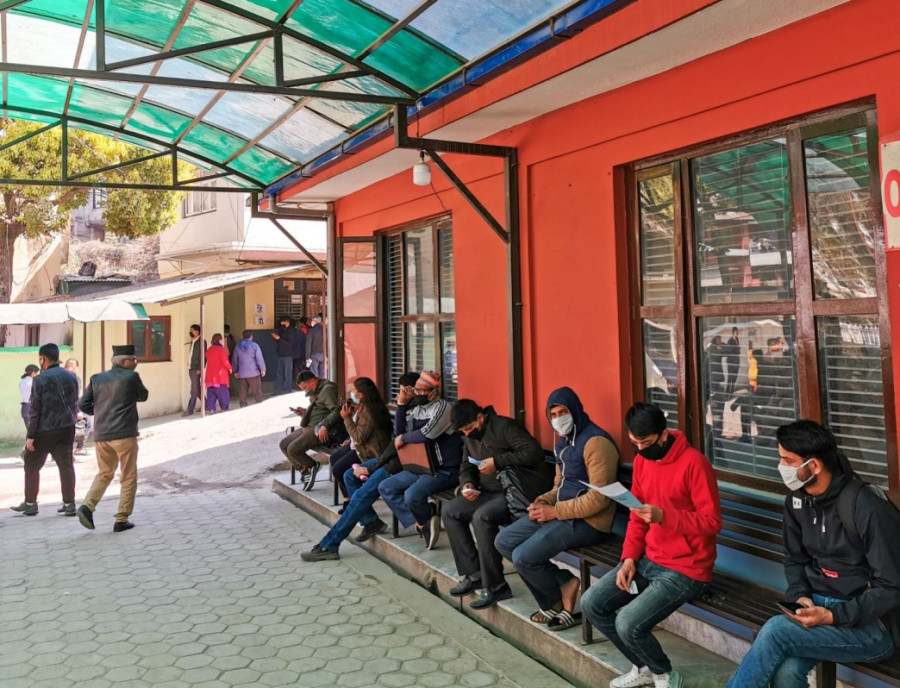Columns
Nepal’s experience with XBB.1.16
We need more studies on how much or how long a booster dose can protect us against infection.
Dr Sher Bahadur Pun
A sudden rise in Covid-19 infections has raised many questions, including the possible emergence of new variants/sub-variants of the SARS-CoV-2 virus. It was assumed that the virus circulating in India might have caused the current surge of SARS-CoV-2 infections in Nepal. On April 3, 2023, the Ministry of Health and Population revealed that at least nine sub-variants of Omicron have been circulating in Nepal, where XBB.1.16 sub-variant was found to be the leading cause of the current spike in the SARS-CoV-2 infections, accounting for 42 percent of all sequenced samples. In fact, this Omicron sub-variant (XBB.1.16) was also found to be the main cause of the recent surge of SARS-CoV-2 in India as well. A recent preprint article (not yet peer-reviewed) published by Japanese researchers found that XBB.1.16 is more transmissible (i.e. more contagious) than any other sub-variants of Omicron, and thus warned that sooner or later, the XBB.1.16 sub-variant may spread throughout the world in the coming days. However, little is known about Omicron sub-variant XBB.1.16, which is labelled a “variant under monitoring” by the World Health Organisation (WHO).
On April 3, 2023, the Ministry of Health and Population said at least nine Omicron sub-variants were found circulating in Nepal. BA.1.1, BA.2, BA.2.76, BA.5, BA.5.2, XBB.1.16, XBB.1.5, XBB.2.6, and XBF sub-variants have been confirmed by the sequencing method. Most confirmed cases showed the patients suffered from chills, severe body aches (particularly back pain), headache, severe fatigue, runny nose, eye pain, extreme weakness and dry cough (or throat irritation/pain). Notably, loss of taste and smell are other unusual symptoms found in patients with Omicron sub-variant/s.
India has reported that “itchy, red with sticky eyes” were seen among children with XBB.1.16 sub-variant. Paediatricians in Nepal, however, have not reported similar observations in children so far. People of older age and with underlying medical conditions are found to be severely ill, requiring a high dependency unit (HDU) or intensive care unit (ICU). Since the beginning of the XBB.1.16 virus surge (i.e., from March 23 until April 16, 2023), 69 percent of all admitted cases at the Sukraraj Tropical and Infectious Disease Hospital (STIDH), were above 55 years of age. Of them, 61 percent had underlying medical conditions such as hypertension, diabetes, or lung diseases. It shows that elderly people with comorbidities are at a greater risk of severe Covid-19 after infection with XBB.1.16 sub-variant, despite completing the primary series (2-dose). The majority of them (admitted patients) were females (69 percent). At present, the greater disease severity in females, as compared to males is not clear. This observation is contrary to previous studies (in previous Covid-19 waves), which showed that males experience higher disease severity than females.
One interesting but much-awaited observation (for mainly the scientific community) was how currently available vaccines could/would react if new SARS-CoV-2 virus/es continue to infect vaccinated persons, as more than six months have passed since people received their primary series (2-dose). There hasn’t been enough study on how much or how long a booster dose can protect. Experts have no clear consensus on these matters. All patients admitted at STIDH (since the beginning of the ongoing Covid-19 surge), were vaccinated with primary series (2-dose) but without a booster dose. Nevertheless, most of these patients were discharged within a day and none stayed at the hospital for more than five days, meaning the primary series (2-dose) alone is still effective against the new SARS-CoV-2 virus/es. Eighty-five percent of these admitted patients received the Sinopharm Covid-19 vaccine, known as the Vero cell vaccine (and the remaining 15 percent received the Covishield vaccine, manufactured by the Serum Institute of India). Very recently, the World Health Organisation (WHO) has revised Covid-19 vaccine recommendations, suggesting that older adults; young adults with significant comorbidities (e.g., diabetes, heart disease); people with immunocompromising conditions; and frontline health workers should get a booster between six to 12 months after their last vaccine. In Nepal, all people above 55 years of age, health workers and people with weak immunity are offered/encouraged to receive a second booster or a fourth dose.
Another important question is whether the current surge of SARS-CoV-2 infection in India and Nepal is in the beginning of the endemic phase, meaning SARS-CoV-2 is no longer in severe form as compared to previous waves/variants and is expected to remain stable (under control) in the coming days/weeks. For example, influenza is considered an endemic virus for which treatment options and vaccines are available. However, people with pre-existing medical conditions, young children and older people, are at a higher risk of more severe illness. Moreover, it is a predictable disease, based on specific regions/countries. The current surge of Omicron sub-variants in India and Nepal shows they are less severe, with no increase in hospitalisations or deaths compared to previous waves. It is becoming increasingly clear that it’s a seasonal pattern, spiking in February-April and July-September, similar to the seasonal flu virus.
Currently, XBB.1.16, the sub-variant of Omicron, is widespread and has become a leading cause of ongoing SARS-CoV-2 surge in India and Nepal. However, so far, very little information is available about this virus. It is possible that sooner or later, this virus may spread worldwide. Thus, understanding the Nepal experience on impact of Omicron XBB.1.16 sub-variant will be informative and, more importantly, can help develop remedial plans and strategies.




 13.12°C Kathmandu
13.12°C Kathmandu















